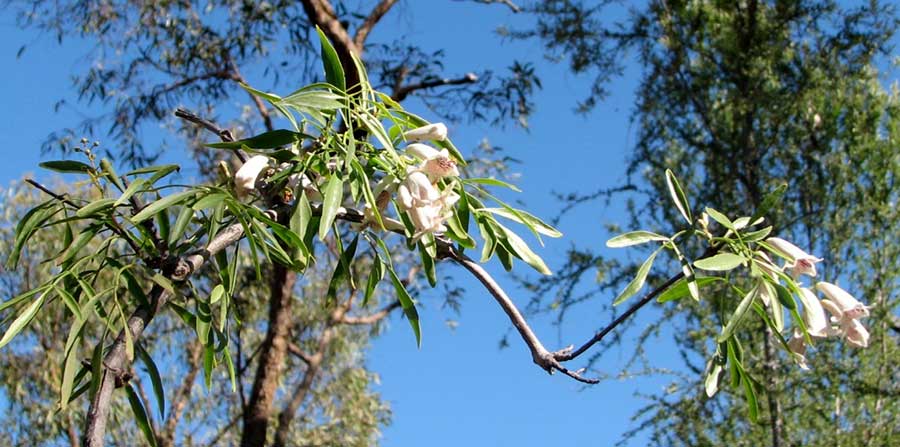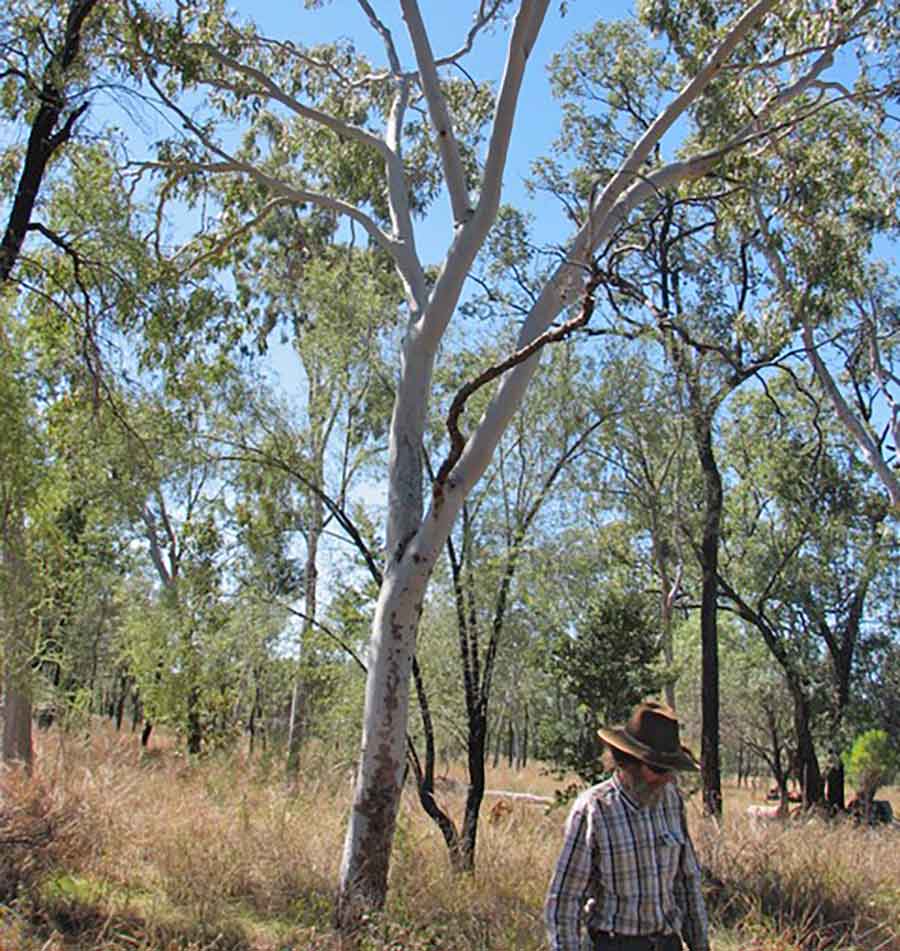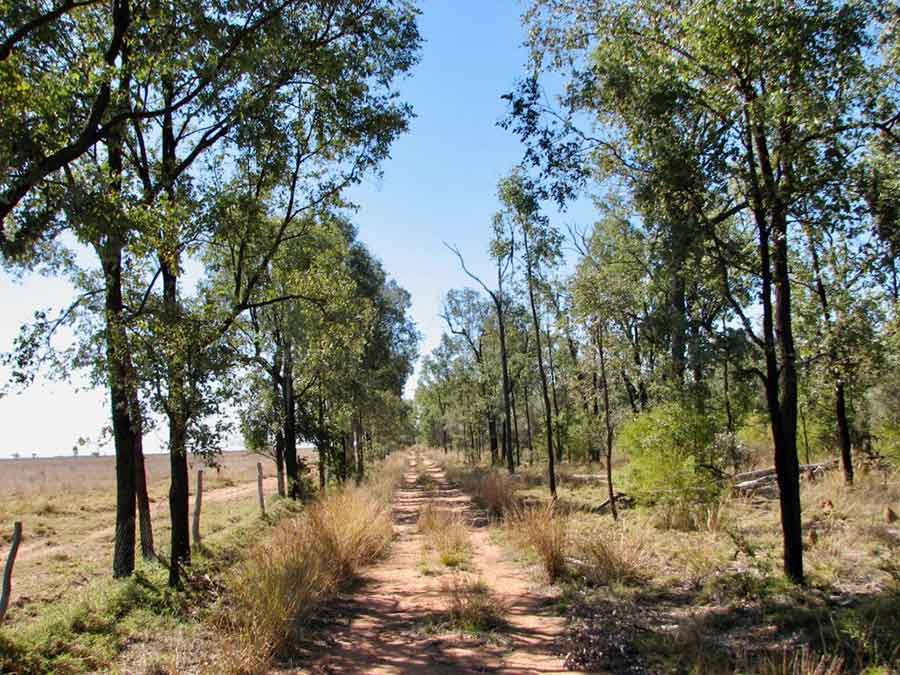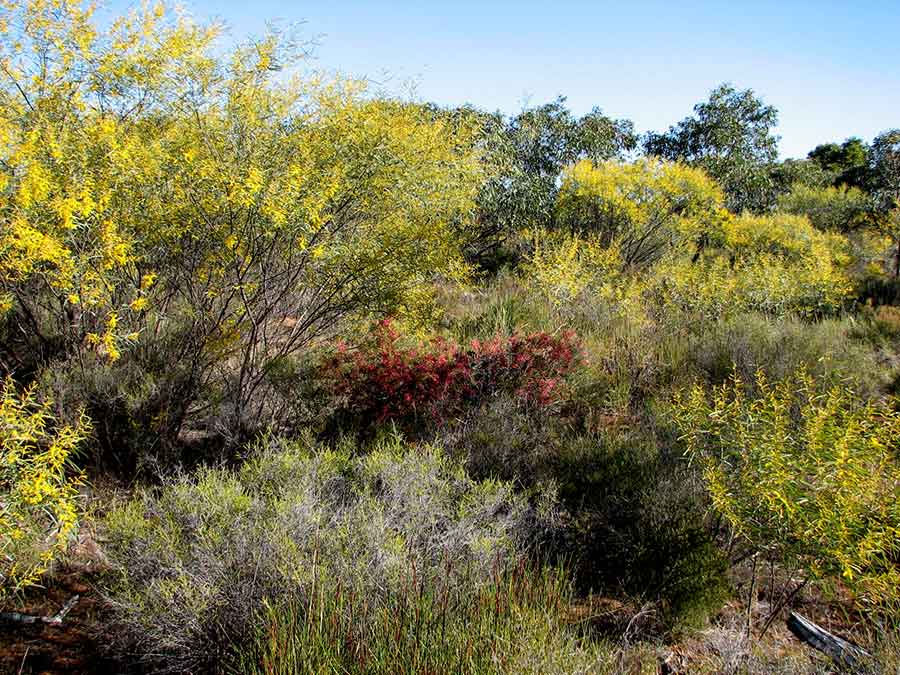
Bimblebox Nature Refuge occupies 8,000 hectares. Not huge by western Queensland measures, but by NSW coastal standards it’s almost inconceivably vast.
My Mountain wildlife refuge and conservation property was only 64 hectares, and I know how much work was involved in trying to keep an eye out for new invading plants and then to try to keep them in check, year after year. Weeding, weeding, weeding…
My place was remote from agriculture… and people… so there were relatively few feral plants or animals. But even now, when I see paddocks full of fireweed and Crofton weed in vast amounts in national parks and state forests… I sigh, and groan inwardly.
What I did on my little patch may not have made much difference overall, but it meant that one forest ecosystem had the chance to regenerate as it should and not be choked by a feral understorey. And indeed to be as ‘natural’ and in balance as it could be.
As Archie Roach sang, ‘The Australian bush is losing its identity…’

For the 22 years since the gazettal of Bimblebox Nature Refuge, it’s been mainly Ian Hoch doing that neverending work on those 8000ha. Paola is often needed on their sister property, and since 2007, greatly occupied with the fight to save the place from the coal threat. Occasional volunteers have helped, but there have never been enough.
Many who visit have offered advice on how to run or improve Bimblebox, often with grand plans, especially since that coal threat reared its head higher in late 2019.
The other day I read the following words of Ian’s; they struck me as expressing so well the many and varied needs of caring for the Refuge there… and why at least one other person helping would make a big difference. So I asked his permission to share extracts from them.
As Ian says, we need these visiting people to see: ‘the Bimblebox paradox – it’s everything and it’s nothing’.
‘Change comes one step at a time.’ If people can ‘…see this situation from the resident’s perspective, or at least some of it, or at least to think more about the reasons for historical failure rather than the prospects of future success. I could then say to each as they departed – rather than all the fanfare, the best way you can help is look out for that one person. Now you know how it is here and what’s missing. It’s not at all the postcard depicted by the artists and for the media or government or EDO.
‘The missing bit is out there somewhere in the suburbs and you might be in a position to fill the gap. One person who can handle this domestic situation, and has a similar interest and has nothing better to do – that’s all we need right now, so starting today we go systematically around the property and catch the coffee senna and parkinsonia and this latest ghastly interloper with thorns to puncture a bullock hide, before they shed their 20 years worth of seed, and of course the horrid harrisia can’t be far away and with the advantage of bird dispersal in this jungle we’ll have a veritable nightmare when it arrives.
‘After that we might even get some fencing in, secure the hotspot boundaries to avoid more strife with the neighbours, and run electric wires along roads so we can graze to reduce fire, or control burn without having the stock flog the pasture in that critical recovery phase. We might manage to rabbit proof this nursery, and make a start of thinning the century of thickening and ultimately show results to make developers everywhere wish like hell they’d never cleared their land. That’s when we arrive at the irrefutable conclusion – conservation pays, i.e., we’re far better off working in conjunction with nature than fighting with it. It’s an obvious and oft recited axiom but almost meaningless. We don’t see it around us.

Guess which side of the fence is cared for?
‘You have either production land or recreation land. One stripped, one struggling. Already the health and vitality from retaining diversity is becoming apparent driving around the boundary, but that’s due to the neighbours’ actions, or you might say overaction, rather than our deliberate or constrained inaction.
‘We haven’t done anything yet, and that’s a big part of the aversion and resistance. Whereas with a few years of interaction, or what we now call regeneration, where we check the spread of exotics and enhance floral diversity (with controlled grazing) and redress the pasture/woody imbalance (with herbicide, because we’ve learnt that fire can’t and bulldozers make it worse) would turn everything around. In that regard one able bodied person with nothing but work clothes and willingness is worth more than a thousand novel proposals, as clever and well intended as they are. We could start our on the boundary where the contrast is most telling.
‘We’ve been here 22 years now, longer than anyone since the first people were turfed out, or at least I have, and in that time have actually come up with a few worthwhile undertakings myself and it’s amazing how many think you’re short of ideas and direction. Art camp’s a case in point.’
It was built from ‘recovered and repaired materials’, mainly by Ian and son Karly. As TBA said in their Chuffed campaign, it needs an upgrade, and the funds are there, thanks to supporters’ generosity; COVID stopped one capable and keen helper from coming over the border when the weather was cool enough to start the work last year, and now it’s that time again.
Despite funds and advice, ‘nobody bends over and picks up the pieces.’ Ian is about to start the camp work, although he has so much to do already. He now urgently needs that helper. Weeds don’t wait while he is busy elsewhere! Then he could keep up the daily work of caring for Bimblebox and make the camp fully functional again for September, when the rains have come and the heath is a mass of colour. Then artists or visitors who want to come and camp and be energised and inspired by Nature at Bimblebox can do so again.

So I am pleading with you all to think hard whether you know someone who might be able to fill that volunteer role very soon and help Ian with this camp and other work. Caring for Nature takes work!
If you do, or may be able to volunteer yourself, please email Paola on bimblebox@gmail.com or call her on (07) 4985 3474
Thank you Sharyn